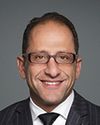Thanks, Mr. Poilievre.
I do appreciate what Elon Musk is attempting to do. It's a fairly draconian statement to talk about shutting down civilization without oil and gas. The comment we should be taking from that is that civilization is extremely linked to hydrocarbon products. We're talking about oil and gas into the future. It's our livelihoods, whether it's hospitals, any chemical production or anything that we do at this particular time in everyday society. The clothes we wear and all the textiles all rely on hydrocarbon products.
We agree. On the medical science side, on hospitals closing and the amount of materials that are used, it's petroleum products. This is where I come back to. We need a measured approach into the future, which relies on science and technology, like carbon capture, utilization and storage. We're going to transition for an extended period of time. This is not a start-and-stop exercise. It should be respected and rewarded.
Just to close off on that, what isn't talked about much is the hydrogen development side that everyone is so excited about. Hydrogen development needs carbon capture as well. There is going to be a transition phase that we should be advancing through very practically, logically and sequentially.





